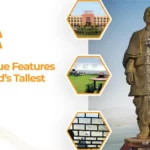The Constitution of India is the supreme law of India. It lays down the framework defining fundamental political principles, establishes the structure, procedures, powers and duties of government institutions and sets out fundamental rights, directive principles and the duties of citizens. It is the longest written constitution of any sovereign country in the world. The nation is governed by it. B. R. Ambedkar is regarded as its chief architect Online Quiz .
It imparts constitutional supremacy and not parliamentary supremacy, as it is not created by the Parliament but, by a constituent assembly, and adopted by its people, with a declaration in its preamble.Constitution of India Parliament cannot override the constitution Online Quiz .
It was adopted by the Constituent Assembly on 26 November 1949, and came into effect on 26 January 1950. Constitution of India With its adoption, the Union of India became the modern and contemporary Republic of India replacing the Government of India Act, 1935 as the country’s fundamental governing document. To ensure constitutional autocracy, the framers of the constitution repealed the prior Acts of the British Parliament via Article 395 of the constitution. India celebrates its coming into force on 26 January each year, as Republic Day.
It declares India a sovereign, socialist, secular, Constitution of India democratic republic, assuring its citizens of justice, equality, and liberty, and endeavors to promote fraternity among them
Online Quiz The major portion of the Indian subcontinent was under British rule from 1857 to 1947. When the Constitution of India came into force on 26 January 1950, it repealed the Indian Independence Act. India ceased to be a dominion of the British Crown and became a sovereign democratic republic. The date of 26 January was chosen to commemorate the Purna Swaraj declaration of independence of 1930.
Articles 5, 6, 7, 8, 9, 60, 324, 366, 367, 379, 380, 388, 391, 392, 393 and 394 of the Constitution came into force on 26 November 1949 and the remaining articles on 26 January 1950.
[no_toc]
[WpProQuiz 10]





